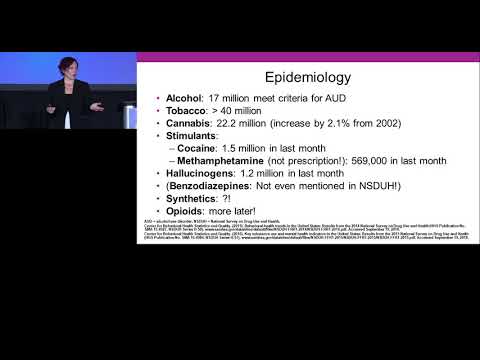Medication Assisted Treatment in Patients with Opioid Use Disorder: Answers from
Contents
- What is Medication Assisted Treatment (MAT)?
- What are the benefits of MAT for patients with opioid use disorder?
- What are the risks associated with MAT?
- How does MAT work in patients with opioid use disorder?
- What are the different types of medications used in MAT?
- How is MAT individualized for each patient?
- What are the challenges associated with MAT?
- What is the future of MAT?
- How can patients get started on MAT?
- What resources are available for patients with opioid use disorder?
Dr. Mark Willenbring, an addiction psychiatrist, answers some common questions about Medication Assisted Treatment (MAT) for opioid use disorder.
Checkout this video:
What is Medication Assisted Treatment (MAT)?
Medication assisted treatment (MAT) is the use of medication along with counseling and behavioral therapies, which together provide a “whole-person” approach to the treatment of substance use disorders. MAT is used to treat patients with opioid use disorder (OUD), as well as alcohol and other substance use disorders.
There are three medications that are approved by the FDA for the treatment of OUD: methadone, buprenorphine, and naltrexone. These medications work by binding to the same receptors in the brain as opioids, but they do so in different ways. Methadone and buprenorphine dampen the effects of withdrawal and reduce cravings, while naltrexone blocks the effects of opioids.
MAT is often used in conjunction with other forms of treatment, such as counseling, behavioral therapies, and 12-step programs. When these services are integrated into a MAT program, patients have a higher chance of long-term recovery.
What are the benefits of MAT for patients with opioid use disorder?
MAT has been shown to be an effective treatment for patients with opioid use disorder. MAT can help to reduce cravings and withdrawal symptoms, and can also help to improve patients’ functioning and quality of life. MAT is also associated with a reduced risk of overdose and death, and can help to improve patient retention in treatment.
What are the risks associated with MAT?
There are several risks associated with MAT, including:
-Dependence on the medication
-Loss of control over use of opioids
-Interactions with other substances
-Side effects of the medication
-Un supervised use of the medication
How does MAT work in patients with opioid use disorder?
Medication assisted treatment (MAT) is a comprehensive approach to treating patients with opioid use disorder that involves the use of FDA-approved medications, such as buprenorphine and methadone, in combination with counseling and behavioral therapies.
MAT is proven to be an effective treatment for opioid use disorder, reducing the risk of relapse and overdose and helping patients to lead productive lives. When used as part of a comprehensive treatment plan, MAT can help patients to abstain from illicit drug use, improve their overall health and well-being, and regain custody of their children.
What are the different types of medications used in MAT?
There are three FDA-approved medications used in medication assisted treatment (MAT) for opioid use disorder: methadone, buprenorphine, and naltrexone.
Methadone is a long-acting synthetic opioid that is dispensed in liquid form only through federally regulated clinics. Buprenorphine is a partial opioid agonist that can be prescribed by any qualified physician and dispensed through pharmacies in tablet or film form. Naltrexone is an opioid antagonist that blocks the effects of opioids and can be prescribed by any qualified physician but must be dispensed through a specialty pharmacy.
How is MAT individualized for each patient?
There is no one-size-fits-all answer to this question, as the individualization of MAT depends on a variety of factors specific to each patient’s needs. However, some common elements of personalized MAT plans include:
-The selection of the specific medications used, which may be based on the patient’s preferences, medical history, and other factors
-The dosage and frequency of administration of those medications
-The duration of treatment
-The addition of other therapies, such as counseling or behavioral therapies, as needed
What are the challenges associated with MAT?
There are a number of challenges associated with providing medication assisted treatment (MAT) to patients with opioid use disorder. First, there is a lack of trained providers. Second, MAT requires close monitoring and coordination of care between the patient, the provider, and other health care professionals. Third, there is a lack of insurance coverage for MAT. Fourth, there is stigma associated with using medication to treat addiction. Finally, there is a lack of evidence-based guidelines for the use of MAT in patients with opioid use disorder.
What is the future of MAT?
As the United States continues to face an opioid epidemic, there is an increasing need for effective treatment options for patients with opioid use disorder (OUD). Medication assisted treatment (MAT) is one potential option that has shown promise in helping patients to recover from OUD. However, there is still much debate and uncertainty about the future of MAT.
There are a number of different medications that can be used as part of MAT, including methadone, buprenorphine, and naltrexone. Each of these medications has its own unique benefits and risks. Methadone is perhaps the most well-known medication used for MAT, but it can also be associated with a number of serious side effects, including respiratory depression and death. Buprenorphine is a newer medication that seems to be more effective and safer than methadone, but it still has its own risks. Naltrexone is an even newer medication that blocks the effects of opioids, but it can also cause severe withdrawal symptoms in patients who are not already abstinent from opioids.
There are a number of unanswered questions about MAT that need to be addressed in order for it to become a more widely accepted treatment option. For example, there is still much debate about the best way to deliver MAT services. There are also questions about how MAT should be paid for and whether or not insurers should be required to cover it. Additionally, there is concern about the potential for abuse and diversion of MAT medications.
Despite these challenges, MAT remains a promising treatment option for patients with OUD. With more research and additional data, it is likely thatMAT will become a more widely accepted treatment modality in the future.
How can patients get started on MAT?
Getting started on MAT usually begins with a conversation with your doctor.
Your doctor will likely ask about your medical history, family history, and any other medications you are taking.
You will also be asked about your drug use history and your goals for treatment.
Based on this information, your doctor will determine if MAT is right for you and, if so, which medication would be best suited to help you achieve your treatment goals.
What resources are available for patients with opioid use disorder?
There are many resources available for patients with opioid use disorder. One of the most important is medication assisted treatment (MAT). MAT is a treatment approach that combines behavioral therapy and medications to treat substance use disorders. This approach has been shown to be effective in treating patients with opioid use disorder, and it can help patients reduce their risk of relapse and overdose. There are many MAT programs available, and you can find more information about them by contacting your local mental health or Substance Abuse and mental health Services Administration (SAMHSA) office. You can also find information about MAT programs on the SAMHSA website.







